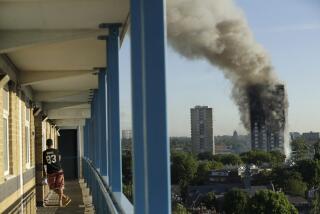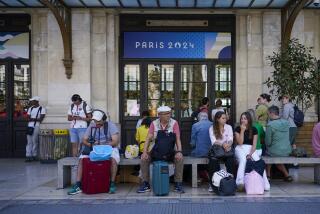Official inquest opens into the London subway bombings that killed 52
- Share via
Reporting from London — More than five years after a flurry of rush-hour bombings killed 52 people on London subway trains and a bus, an official inquest finally opened Monday into the suicide plot.
The initial evidence heard Monday focused in large part on delays and misunderstandings that held up emergency services and on the activities of some of the assailants before the July 7, 2005, attack that also left 700 injured.
Officials say it has taken five years to collate evidence from several jurisdictions in London as well as areas in the north of England where three of the four bombers were based, as well as investigations in Pakistan where they were known to have undergone training in explosive and guerrilla tactics.
Opening the hearing, coroner Heather Hallett told a packed courtroom and annex crowded with victims’ families, legal representatives and journalists, that “I will balance carefully the needs of national security with relevance and fairness.”
Much is already known about the events and the activities and identities of the bombers, Mohamed Sidique Khan, Shahzad Tanweer, Hasib Hussain and Germaine Lindsay, who traveled to central London that day carrying rucksacks full of explosives that they detonated on a bus at Tavistock Square near the King’s Cross mainline station and on trains at Edgware Road, Aldgate and Russell Square, all central London subway stations.
But despite previous reports, partial inquiries and the trial of three men acquitted of helping the bombers, families of victims still have questions, and Monday they heard some evidence for the first time. That included the circumstances of their loved ones’ deaths, particularly with regard to the role played by the emergency ambulance and police services, and London Transport.
“The slaughter caused by the bombs caused not only death, devastation and mutilation, but unleashed an unimaginable tidal wave of shock, misery and horror for their families and loved ones,” said inquest lawyer Hugo Keith. “Just as the lives of the 52 victims were callously and brutally ended, the lives of many others have been, and continue to be, tortured and wrecked.”
The court was told that the bombers were viewed “smiling and laughing and generally relaxed” on their way by train to creating the carnage.
Keith said the inquest sought to reveal whether there were any failings in the way victims were treated, “the circumstances of their death, whether there were failings in the emergency response and whether they contributed or were causative of their death.”
Graham Foulkes, who lost his son David, said he was seated “next to people whose relatives were alive for some time and they heard in detail today how the ambulances were delayed, because they didn’t even know … the address of the tube stations…. It was very distressing.”
Evidence will be heard over the next five months or so from 240 witnesses.
Stobart is a staff writer in The Times’ London Bureau.
More to Read
Sign up for Essential California
The most important California stories and recommendations in your inbox every morning.
You may occasionally receive promotional content from the Los Angeles Times.










